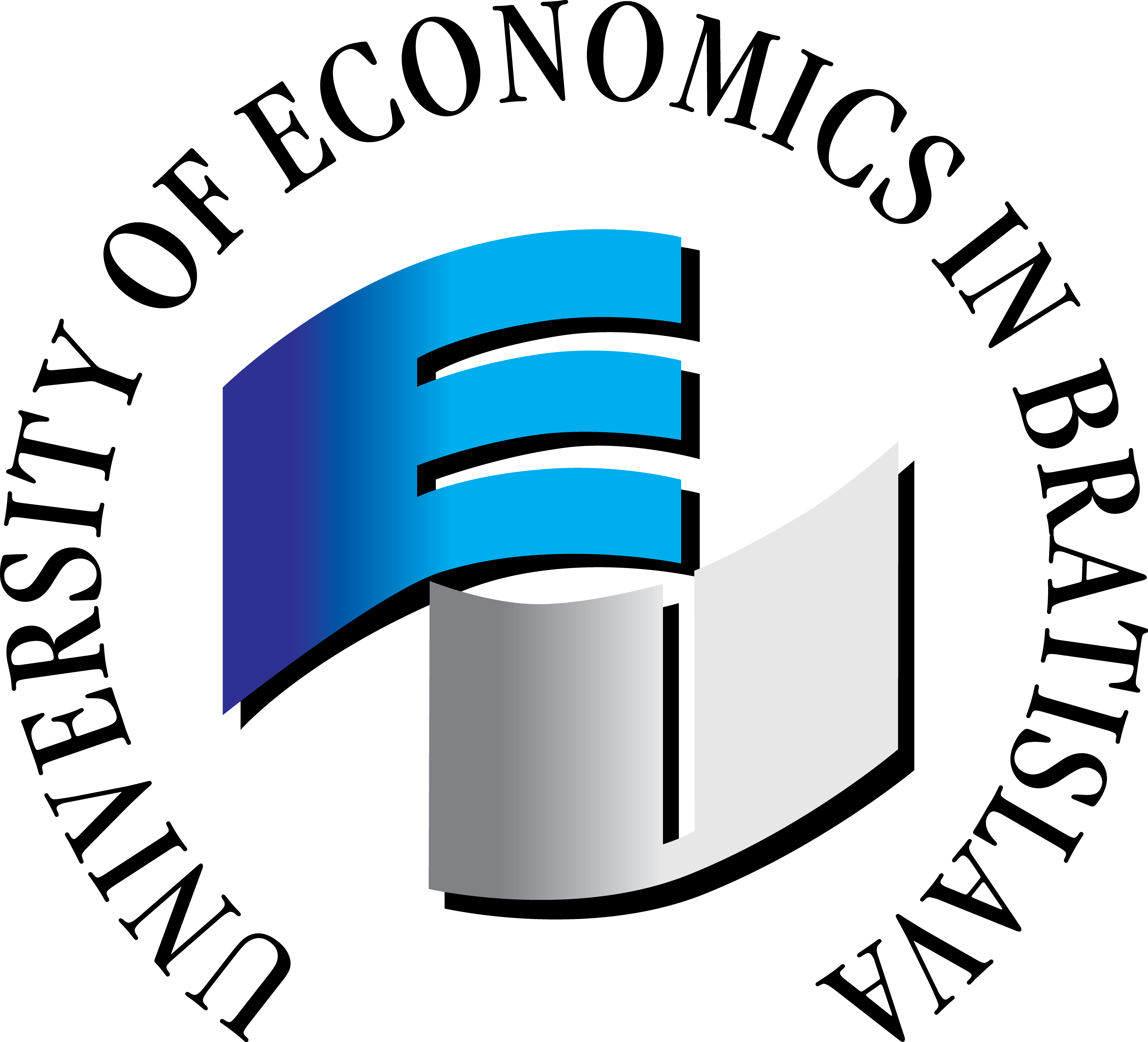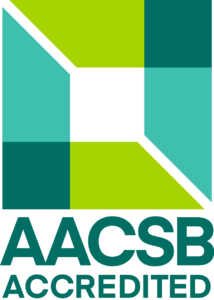Economic Informatics I
- Credits: 7
- Ending: Examination
- Range: 2P + 2C
- Semester: winter
- Year: 3
- Faculty of Economic Informatics
Teachers
Included in study programs
Teaching results
After completing the course, students should have:
Knowledge
A. Distinguish between types of enterprise information systems (IS), their functionality, and development trends, based on appropriate methods and architectures.
B. Distinguish between various types of organizational structures and the differences between functional and process-based enterprise management.
C. Identify different types of applications used in enterprise information systems.
Skills
D. Use various diagrammatic and tabular techniques for visualizing enterprise architecture, with special attention to methods for modeling business processes.
E. Apply the principles of writing academic reports and other professional papers, ensuring that these works are based on credible sources, have a systematic structure, and are relevant. Reports are developed in small teams, promoting teamwork and familiarization with the principles of writing final theses.
F. Use Drawio software, available freely online, for creating diagrams and practicing various diagramming techniques. In selected tabular techniques, MS Excel is also applied during seminars.
Competentness
E. Develop academic reports in groups, improve teamwork, and adopt basic principles of academic writing—demonstrating autonomy, collaboration, and the ability to apply theoretical knowledge.
C., F. Independently apply acquired techniques and tools (Drawio, Excel) to analyze business processes and enterprise architectures—demonstrating the ability to transfer knowledge into practice.
Indicative content
1. Enterprise definition. Classification of enterprises. Different types of organizational structure of a company. Principles of creating organizational diagrams.
2. Functional business management. Hierarchical diagram of functions. Relational matrix. Diagram of functional dependencies - its global level and sub-levels.
3. Business process management. Business processes and their basic characteristics. Process map. Process classification - main, management and support processes, internal and external processes.
4. Diagram and spreadsheet techniques for business process modeling: flowcharts, BPMN diagrams, RACI matrices, decision tables.
5. Enterprise architecture. The model of the essential environment of the company and the interconnection of individual diagrams, which together create a comprehensive and coherent model of corporate architecture.
6. Information system and its basic characteristics. Data and information. Information properties. Information system functions. Classification of information system subsystems with a focus on the manufacturing company.
7. Global information system architecture - strategic, tactical and operational level of management. Executive Information System. Management Information System. Decision support systems. Expert systems. Electronic Data Interchange, Office Information System.
8. Partial architectures of the information system - application, software, data / information and technology architecture. Cloud Computing and its types.
9. History of information systems in Slovakia.
10. Information systems life cycle - traditional and agile approaches. Waterfall, incremental and evolutionary model. SCRUM, Extreme Programming and Adaptive Software Development.
11. Different types of business applications and possibilities of their use. ERP, ERP II, CRM, SCM.
12. Different types of business applications and possibilities of their use APS, MES, concept CIM, BI.
13. System integration. Ways of integration with a small number of applications. Complex solutions for complex systems. Virtual enterprise and its characteristics.
Support literature
Brodsky, A., Hammoudi, S., Śmiałek, M., & Filipe, J. (Eds.). (2022). Enterprise information systems: 23rd International Conference, ICEIS 2021, virtual event, April 26 28, 2021, revised selected papers (Lecture Notes in Business Information Processing, Vol. 455). Springer Cham. ISBN 978 3 031 08965 7. SpringerLink+1
Augusto, A., Gill, A., Nurcan, S., Reinhartz Berger, I., Schmidt, R., & Zdravković, J. (Eds.). (2021). Enterprise, business process and information systems modeling: 22nd International Conference, BPMDS 2021 & 26th International Conference, EMMSAD 2021 – proceedings (Lecture Notes in Business Information Processing). Springer Cham. ISBN 978 3 030 79185 8.
Jurík, P. (2018). Informačné systémy v podnikovej praxi (2. [aktualizované] vyd.). Nové Zámky: Tlačiareň Merkur. ISBN 978-80-970233-7-9.
Pour, J., Gála, L., & Šedivá, Z. (2015). Podniková informatika (3. vyd.). Praha: Grada Publishing. ISBN 978-80-247-5457-4.
Basl, J., & Blažíček, R. (2012). Podnikové informační systémy, Podnik v informační společnosti (3., aktualizované a doplněné vyd.). Praha: Grada. ISBN 978-80-247-4307-3.
Bruckner, T., Voříšek, J., Buchalcevová, A., Stanovská, I., Chlapek, D., & Řepa, V. (2012). Tvorba informačních systémů. Praha: Grada Publishing. ISBN 978-80-247-4153-6
Syllabus
1. Definition and Classification of Enterprises Explanation of the concept of an enterprise, types of enterprises by purpose and size. Overview of organizational structures (linear, functional, matrix, project). Principles of creating organizational charts (practical: using Draw.io). Workshop: Design an organizational structure for a selected company. 2. Functional Management of Enterprises Characteristics of functional enterprise management. Construction of function hierarchy diagrams and relational matrices. Analysis of functional dependencies at global and partial levels. Workshop: Design a functional model for a selected enterprise. 3. Process-Based Enterprise Management Enterprise processes and their characteristics. Classification of processes: main, managerial, support; internal vs. external. Creating process maps and identifying key business processes. Workshop: Map and classify processes of a real or fictional company. 4. Diagramming and Tabular Techniques for Process Modeling Flowcharts, BPMN diagrams, RACI matrices, decision tables. Comparison of techniques and their practical application. Workshop: Model a selected process using BPMN and RACI techniques. 5. Enterprise Architecture and Its Components Model of enterprise environment and interconnection of diagrams. Overview of diagrams forming a consistent enterprise architecture. Workshop: Build a coherent model of enterprise architecture. 6. Information Systems and Their Characteristics Distinguishing between data and information, information quality. Functions of information systems in an enterprise. Classification of IS subsystems (production, logistics, accounting, etc.). Workshop: Analyze IS functionalities in a selected production company. 7. Global Information System Architecture IS levels: strategic, tactical, operational. Types of IS: EIS, MIS, DSS, ES, EDI, OIS. Workshop: Design a suitable IS architecture for a selected case. 8. Partial IS Architectures Application, software, data/information, and technology architectures. Cloud Computing: IaaS, PaaS, SaaS models and their evaluation. Workshop: Propose a multi-layer IS architecture including cloud tools. 9. History of Information Systems in Slovakia Evolution of IS in Slovak enterprises (70s–present). Case studies on system evolution in selected sectors. Discussion: Lessons learned for future IS development. 10. IS Lifecycle – Traditional and Agile Approaches Waterfall, incremental, evolutionary models; Agile: SCRUM, XP, ASD. Key phases: analysis, design, development, testing, deployment, maintenance. Workshop: Simulate system development using selected approach. 11. Enterprise Application Types I ERP, ERP II – modules, functionality, integration options. CRM – goals, benefits, customer data management. SCM – coordination of suppliers, logistics, and inventory. Workshop: Design a simple ERP system for a business scenario. 12. Enterprise Application Types II APS, MES, CIM, BI – applications in production and planning. Business Intelligence: tools, dashboards, KPIs. Workshop: Plan data flow and design reports using BI logic. 13. System Integration and Future Trends Integration models: point-to-point, middleware, SOA, APIs. Virtual enterprise, digital twin, and IoT in modern IS. Trends: automation, adaptability, low-code/no-code platforms. Workshop: Analyze integration in a complex enterprise environment.
Requirements to complete the course
Requirements to complete the course:
Seminars: 40% seminar project (extensive paper prepared in groups on current professional topics related to economic informatics). The seminar project verifies the achieved level of educational results C., E., F.
Final exam: 60% knowledge test done on-line using a testing application, which verifies the achieved level of educational results A., B., C., D.
Student workload
Total study load (in hours):
182 hours (of which participation in lectures: 26 hours, participation in seminars: 26 hours, preparation for the exam: 65 hours, elaboration of a semester project: 65 hours).
Language whose command is required to complete the course
slovak
Date of approval: 04.03.2025
Date of the latest change: 06.11.2025

